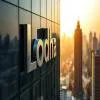A research team at the Indian Institute of Technology Guwahati, led by Prof. Anil K. Mishra from the Department of Civil Engineering, has developed an innovative solution to two major global challenges: industrial waste management and sustainable construction. Their research focuses on creating a geopolymer using industrial byproducts and waste materials, such as water treatment sludge (WTS), fly ash (FA), and ground granulated blast furnace slag (GGBS).
“With the rapid pace of urbanisation and industrialisation, managing industrial waste has become a critical global issue," said IIT Guwahati in a press release. "Among the various types of industrial waste, water treatment sludge poses significant challenges due to its high water content and organic components. Water treatment plants worldwide generate approximately 100,000 metric tonnes of sludge daily. Traditional disposal methods, like landfilling or using sludge as soil additives, have proven to be costly and environmentally risky, as heavy metals can leach into groundwater," added the release.
Speaking on the research, Prof. Anil K. Mishra said, "Our research provides a solution by converting WTS and industrial byproducts like fly ash and GGBS into a geopolymer.
Geopolymers are renowned for their high strength, durability, and minimal environmental impact. Through the process of geopolymerization, silicon and aluminium from these materials react with alkaline activators to form a three-dimensional alumino-silicate structure. This results in a material that matches traditional cement in performance while significantly reducing carbon emissions and energy consumption." The findings of this study were published in the prestigious journal Construction and Building Materials, co-authored by Prof. Anil K. Mishra and his research scholars Alok Bijalwan and Bitupan Sonowal from IIT Guwahati. "One of the key applications of the WTS-FA-GGBS geopolymer is in road construction. The research team evaluated the mechanical properties of the geopolymer, specifically its suitability as a subgrade material for roads and pavements. The subgrade layer forms the foundation of roads, determining the pavement's strength and longevity. Using the WTS-based geopolymer as a stabilizer was found to significantly enhance road performance, particularly in soft or weak soils. In addition to WTS, the team is also focused on geopolymerising construction and demolition (C&D) waste, which exceeds 10 billion tonnes annually and constitutes over 35 per cent of global waste. They have developed applications for C&D waste, including base and subbase layers for road pavements and paver blocks, contributing to effective waste management and reduced environmental impact," said the statement.
Furthermore, the team is investigating the treatment of landfill-mined fine fractions from old municipal solid waste dumpsites, offering promising solutions while supporting circular economy initiatives. "They are also exploring the stabilisation of petroleum sludge by incorporating fly ash and GGBS, aiming to immobilise hazardous heavy metals and prevent environmental leaching. Tests conducted by the IIT Guwahati team, including Unconfined Compressive Strength (UCS) and California Bearing Ratio (CBR) assessments, revealed that the WTS-FA-GGBS geopolymer exceeds the minimum strength requirements for cement-stabilised subgrade materials. Durability tests confirmed its ability to withstand extreme environmental conditions, making it a reliable choice for infrastructure projects across diverse climates. Crucially, the geopolymer is nontoxic.
Leaching tests demonstrated that heavy metal concentrations in the geopolymer leachate are well within the safety limits set by the U.S. Environmental Protection Agency (USEPA), ensuring that it poses no risks to the environment or human health, even in large-scale applications," said in the statement. This research by Prof. Mishra's team addresses several key concerns in modern civil engineering and waste management. By recycling industrial waste, the project helps reduce landfill burden and minimises the environmental damage caused by traditional disposal methods. The innovative geopolymer technology opens new avenues for industries, municipalities, and governments to adopt eco-friendly construction practices while addressing the growing issue of industrial waste disposal. As India continues to urbanise and industrialise, innovations like this play a vital role in building a greener, more sustainable future.




















